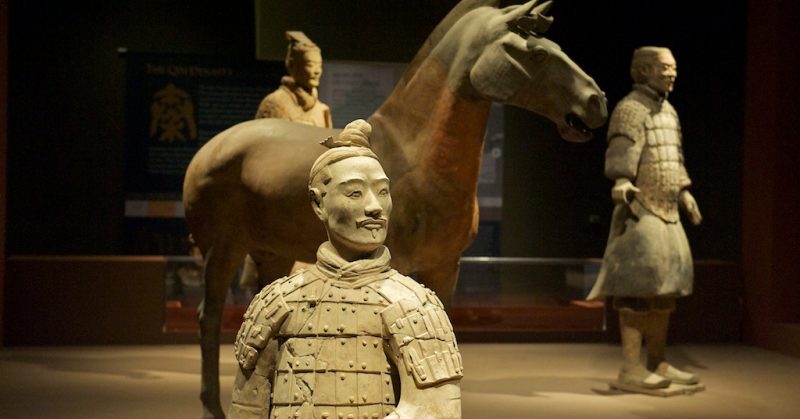Qin Shihuangdi died in 210 BCE. He was the first ruler to unite China. He also built an extensive network of roads, standardized the currency, weights, and measures, standardized a single written script and developed a more consistent legal code.
Among the great accomplishments, he achieved in his life is the place where he is buried when he died. It is a 19-square mile complex that features one of histories greatest armies, although one that is made entirely of clay.
The terracotta warriors at the Mausoleum of the First Qin Emperor were first discovered in 1974 when farmers digging a well recovered a clay head. This was the first discovered warrior of what is estimated to be 7,000 unique figures. The total is unknown because excavations are still underway.
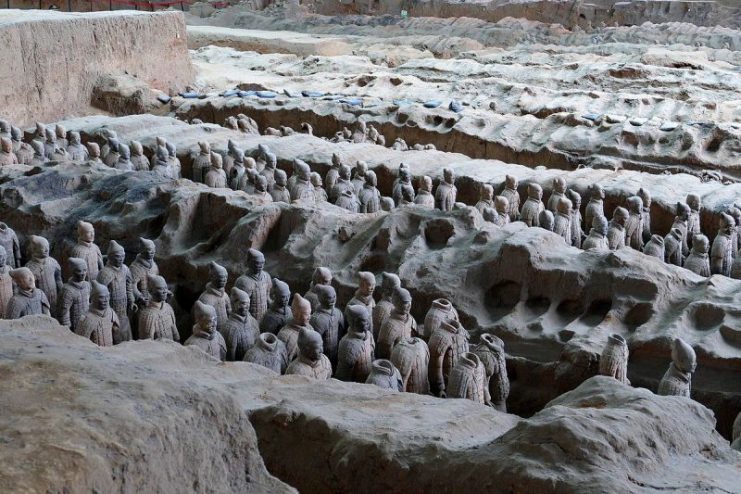
Each of the warriors is unique with a realistic human face which is believed to have been modeled after someone who lived at the time of their creation. The figures weigh between 300 and 400 pounds and are six feet tall. The legs and feet are solid for the base, but the rest of each figure is hollow. The bodies, arms, hands, and heads were molded separately and then attached before being covered with a fine layer of clay. Details were added after the clay.
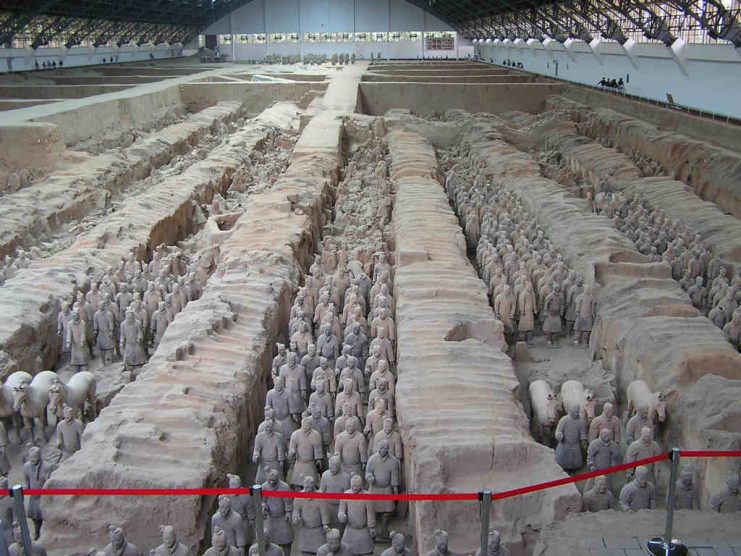
The army stands in formation. It has horses, chariots, and weapons made of bronze – many of which have been plundered. They were buried in pits that are 15 to 20 feet deep. The largest of these pits is about 200 yards long.
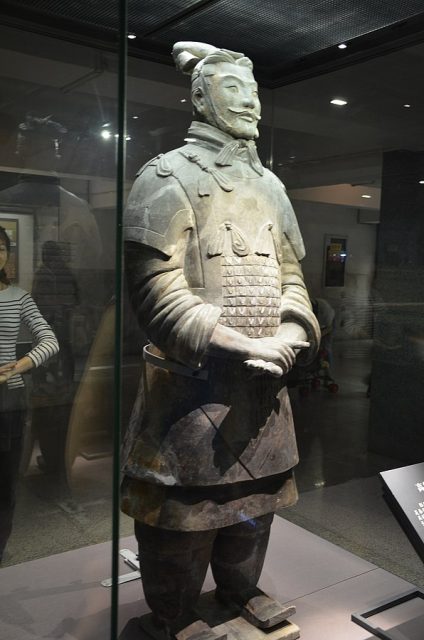
It took hundreds of workers 36 years to complete the army which started while the emperor was still young so that he could watch the details of its development.
It is said that Qin Shihuangdi was interested in immortality. He sent his subjects across his empire to retrieve potions that were supposed to lengthen life. Historians believe that one of the potions contained mercury which ironically led to his death.
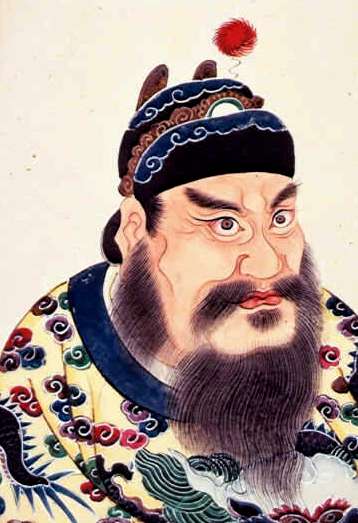
The complex is located half an hour outside of Xi’an on the site of the ancient capital of Xianyang. It is reachable by bus, train, and an international airport. Once in Xi’an, you can reach the mausoleum by bus, minibus, taxi or one of the many guided tours.
The area is known for being bitterly cold in the winter and extremely hot in the summer. It is marked by scrub brush and persimmon and pomegranate groves.
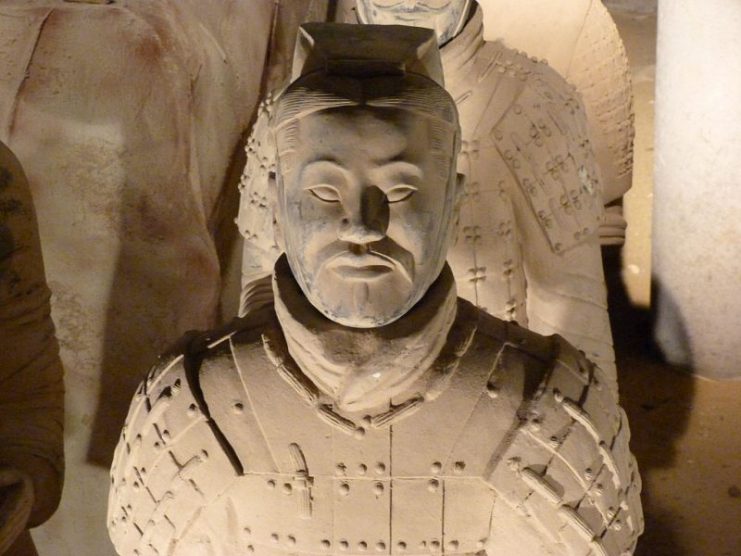
Scientists have uncovered about 600 pits and a complex of vaults underground. Most of the vaults remain unexcavated. Three of the pits are easily accessible being enclosed in the Museum of the Terracotta Army which was built around the site where the soldiers were discovered and opened in 1979.
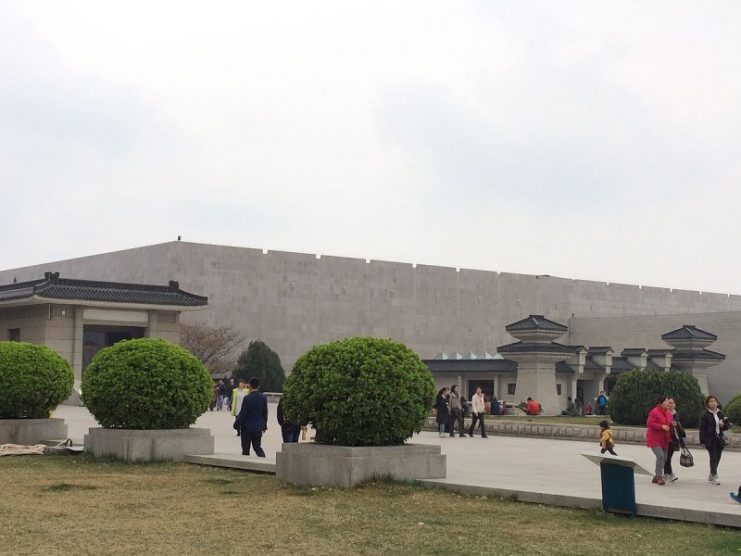
In recent digs at the site, other terracotta figures have been found. These include waterfowl that were cast in bronze and terracotta musicians. There are even terracotta acrobats which are smaller than the army soldiers but just as detailed.
According to Duan Qingbo, the head of the excavation team at the Shaanxi Provincial Research Institute for Archaeology, the pits are filled with an imitation of the court of the emperor. For a long time people thought that the emperor took an army with him when he died but, in reality, he took the entire political system.
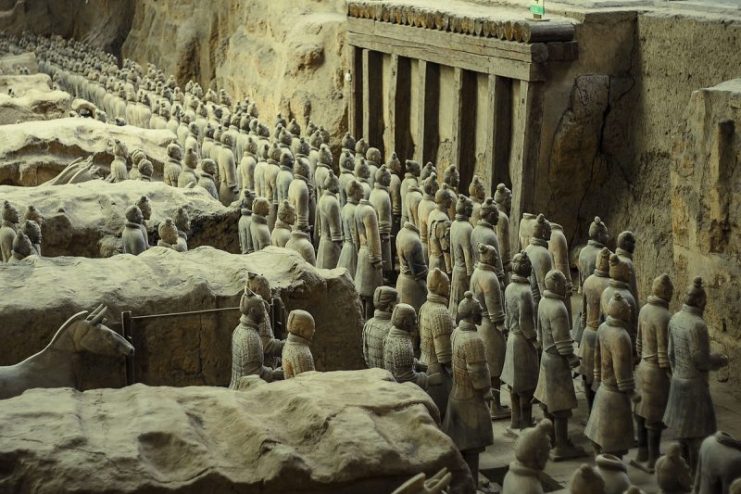
Read another story from us: Romans in China: The Lost Legions of Carrhae
The capital city of Xianyang contained 270 palaces built on orders of the emperor. He would have a new palace built whenever he conquered another state, he would move their rulers to Xianyang and house them in a recreation of their palace. Of the 270 he had built, only the foundation of one remains today.
